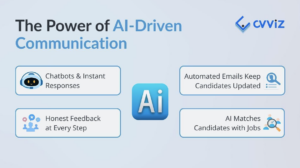Today, the idea of diversity and inclusion is not just one of the many things that HR needs to implement. It is much more than a compliance need. It has gained the business importance. Data has proven that diversity leads to business success. Companies are putting business value to diversity and inclusion.
To give an analogy, look at most vibrant and progressive cities in the world. You will find one common thing about these cities; it would be its diversity and inclusion. Acceptance of different cultures, races and religions. Diversity and inclusion has helped these cities to see the growth it has seen. It is not much different for successful companies too. Companies with diverse workforce tend to do better.
Also, the diversity and inclusion survey at the Salesforce data shows that customers and employees expect companies to go beyond profit and be responsible for making a positive impact on society.
Benefits Of Promoting Diversity And Inclusion In The Workplace
Let’s look at some of the benefits of promoting diversity and inclusion in the workplace. Below aspects should explain why diversity management should be a key focus of any organization.
1. Helps Garner Best Talent
Organization with a greater level of diversity and inclusion in the workplace ends up hiring the best in the business. They are able to reach out more diverse people in quick time. It’s similar to using employee referrals for sourcing talent. Diverse the workforce you have, you will be able to reach out to people with various skills and background.
2. Increases Efficiency and Performance
A big advantage of promoting diversity in the company is that it helps in improving efficiency and performance of the business. Having people with diverse background help gain better perspective related to the problem at hand. Hence, the outcome of the diverse workforce is often more rounded solution which eventually helps in growing business.
Diversity is not limited to cultures, race or demographics. A company would also benefit by having a mix of employees from different age group. The youngsters in the team would have greater energy and acumen to complete tasks quickly, while the experienced one would have the knowledge to guide them.
3. Helps Companies In Expansion
In this globalized world, in order to grow, a company must look to expand. Expansion means establishing business in foreign environment.
Organizations when expanding, they need to deal with different people, different cultures, different laws. Hence, many organizations rely on hiring local talent than transferring one from their head office. It helps them in moving faster. In many cities, local hires of diverse backgrounds are essential in improving sales. Improving diversity levels, especially in global organizations has become a necessity today.
4. Better Customer Satisfaction
In a business which has direct interface with customers, say hotels, restaurants or consumer goods, diversified sales team makes people entering the arena happier.
Customer get to interact with people of the same community, gender, age or race and feel more confident of buying the product or service. Basically customers feel more comfortable. Small gesture goes long way as customer feel more connected.
Unconscious Bias – A Hurdle In Diversity And Inclusion ?
Everyone is biased. Science has proven it. Although we cannot get rid of biases completely, it is important that we recognize it. We need to make attempt to minimize the negative impact of it.
Diversity management could play an important role in garnering and promoting diversity in any organization. However, unconscious bias could be the biggest hurdle in promoting diversity. These are social stereotypes about certain groups of people which individuals make up unconsciously who are outside of that group. While recruiting, unconscious biases may lead people in hiring a less deserving candidate over a deserving one. However, nowadays companies are trying to use AI for recruiting in order to identify unconscious biases in the hiring process.
People need to recognize the kind of biases they have. For instance, during recruiting, if a person is biased towards race or gender, then one should try screening resumes ignoring the names of candidates. Rather, one should try screening resumes without names written on it. For example, it is observed that Asians get more calls for interviews when they use their English names over their native names.
One of the best ways to curb prejudice and stereotype in you is by increasing your exposure to a diverse set of people. Having friends and acquaintances from all walks of life and places could help in negating many biases that you had earlier.
Promoting Diversity And Inclusion In The Workplace
Generally HR professionals are driving diversity initiatives in most organizations. They run various programs to encourage diversity and inclusion. Here are some basic steps for promoting diversity and inclusion in the workplace.
1. Educate Top Management
It begins at the top. Top management takes decisions and then everyone follows. Therefore, it makes sense that top management is educated about increasing need of diversity and inclusion in the workplace. Educational series or training programs could help in improving awareness about the diversity and inclusion.
2. Drive Programs That Supports Inclusion
A simple way of managing diversity and inclusion in the organization is by respecting each individual irrespective of his or her class, gender or race. Promote initiatives that promotes inclusion. For example, HR could plan simple activities like celebrating birthdays and work anniversaries of employees.
3. Improve On Employee Engagement
It is extremely important for the HR team to have a redressal unit. This unit should listen to issues, problems, and grievances of each employee in the organization. In order to be a more inclusive workforce, it is important that an organization is more empathetic and concerned towards all individuals in the system.
As per Salesforce report on equality, employees feel empowered when their voice is heard.
Diversity and Inclusion in Numbers
Let’s look at some numbers. As per Google’s report on diversity and inclusion in the workplace for 2018, 69% of the employees were male while 31% of them were female. In terms of leadership, 74.5% of Google’s top brass were male while the female contributed to 25.5%. The hiring pattern of 2017 revealed that 41% of the employees were Asian while over 45% were white Americans. Latin and blacks also formed part of the organization with 4.2% and 3, 2% respectively.

A 2015 US senses revealed that 67% of the candidates applying for jobs believed that diversity in an organization is their main focus and of greatest importance while choosing a company. A Glassdoor report of the same year stated that 57% of employees believed that their companies should be more diverse.
As per the state of US workforce diversity statistics 41% of managers did not believe that improving diversity was their highest priority. What these statistics may suggest is the fact that there is also some sort of resistance towards increasing diversity and inclusion in organizations.
Summary
In order to sustain in the current dynamic global corporate environment, organizations need to understand the importance of diversity and inclusion. Organizations also need to understand that having a diverse workforce helps in business growth. Improving diversity and fostering a sense of security amongst all employees go a long way in achieving greater success for the organization.



